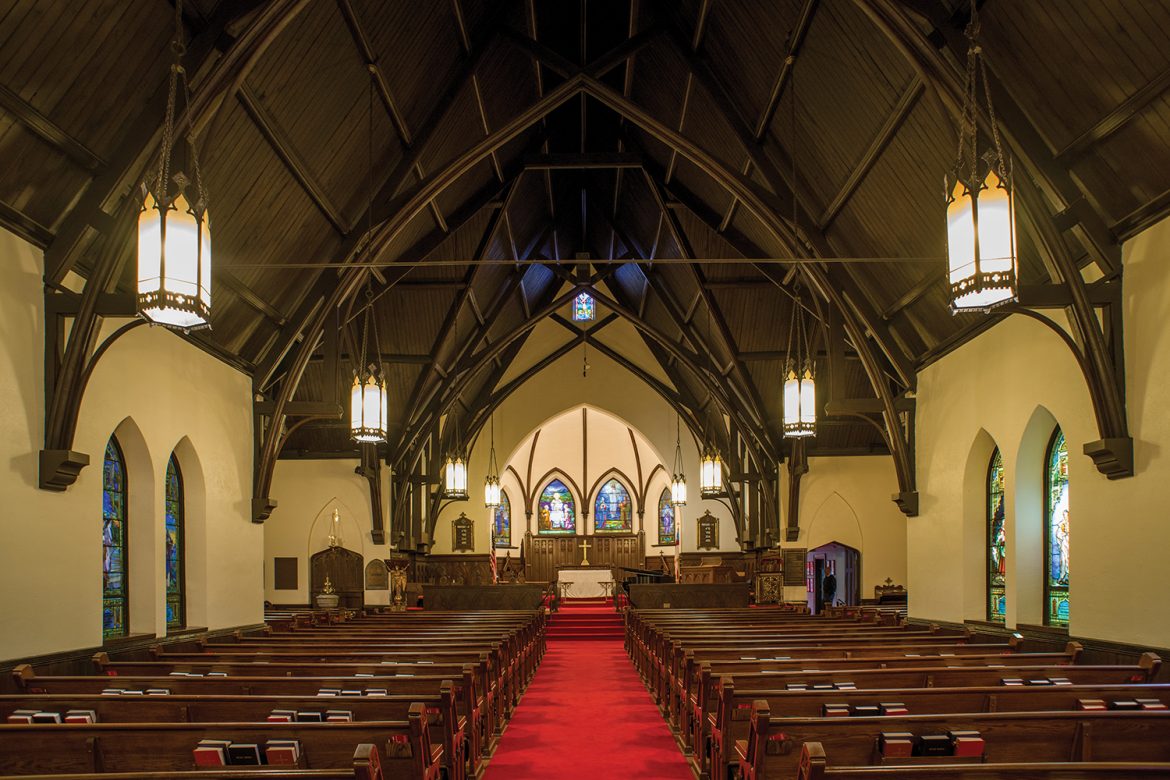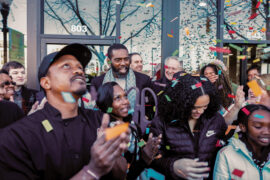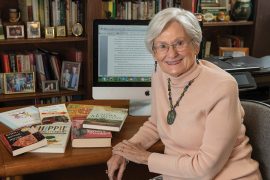Founded in 1869, Trinity Episcopal is one of the region’s oldest and more graceful churches.
By James E. Casto
HQ 107 | AUTUMN 2019
Trinity Episcopal Church isn’t just one of Huntington’s oldest churches. It’s even older than the city itself.
The West Virginia Legislature officially chartered the city of Huntington in 1871. Trinity’s first recorded service was held in Barboursville on Sunday, Aug. 22, 1869, when Barboursville was the county seat of Cabell County. Soon, Barboursville was eclipsed by the rapidly growing new town of Huntington, founded by rail baron Collis P. Huntington to serve as the western terminus of the Chesapeake & Ohio Railway.
Former Union General John Hunt Oley, who came to Huntington in 1871 and was employed as a sales agent for Collis Huntington’s Central Land Company, was a central figure in Trinity’s early history. It was Oley who arranged for the fledgling congregation to meet upstairs over a Third Avenue store. And, as one of three church trustees, he joined with A.J. Enslow and John Hooe Russell in seeking a suitable site for a church building.
Initially, a corner lot at Fifth Avenue and 10th Street was purchased, but at the urging of Abiel Abbot Low, a wealthy friend and business associate of Collis Huntington, the initial site was traded for one on the southeast corner of Fifth Avenue and 11th Street, where Trinity now stands.
A Baltimore architect, Charles E. Cassell, set to work, drawing up a plan that recalled a countryside English chapel. The architect originally planned a stone building; but after seeing the original cost estimates, the vestry decided on brick instead.

Construction began in 1883, and when Trinity’s first full-time rector, the Rev. Norman F. Marshall, arrived in 1887 he found the new church building virtually complete. However, the church wasn’t consecrated until 1903, when the mortgage was paid off.
“It was Collis Huntington’s friends who started Trinity,” said the Rev. Jim Morgan. “And over the years a number of great Huntingtonians have been part of the church.”
Since its founding, the church has been led by more than a dozen rectors. Morgan is the current interim rector following the Rev. Chip Graves, the 14th rector, who resigned in January.
A name that is written large in the church’s history is that of the Rev. S. Roger Tyler, who preached his first sermon at Trinity on Thanksgiving Day 1916 and became rector emeritus in 1953. Until his death in 1963, he continued to actively serve the church. In his 37 years as rector, Tyler baptized 1,200 people and presented 1,500 for confirmation.
In the 1920s, Trinity built a Parish House that included a small auditorium and gymnasium that soon began years of service as a community center. When the record-setting 1937 flood inundated much of Huntington, the Parish House temporarily sheltered refugees forced from their homes by the floodwaters.
“Today,” said Morgan, “Trinity continues to provide service to the community by housing the office for United Way’s ‘Center’ program, the Cridlin Food and Clothing Pantry, which began in 1971, and the CONTACT Rape Crisis Center, which also began in the 1970s. Our annual Christmas Eve dinner, which we started in the 1980s, now serves nearly 500 traditional holiday meals to any and all.”

In discussing Trinity’s history, Senior Warden Staige Davis, Diocesan Liaison Tom Gilpin and Morgan noted that since its founding Trinity has taken seriously its mission of “spreading the Kingdom of the Lord” by helping establish four other Episcopal parishes in the area — St. Peter’s in West Huntington, St. John’s in East Huntington, St. Timothy’s-in-the-Valley in Hurricane and St. Andrew’s in Barboursville (now closed).
On Sept. 8 of this year, the Rt. Rev. Michie (Mike) Klusmeyer, bishop of the Diocese of West Virginia, offered a celebratory mass at Trinity marking its 150th anniversary.
It’s impossible to visit Trinity without being struck by its colorful array of stained-glass windows.
“Trinity’s windows, 36 in all, are memorials given by generous donors in memory of, or in thanksgiving for, loved ones who were faithful servants of God and the church,” Morgan said.
Several of the church’s earliest windows were made by famed artist Louis Comfort Tiffany of New York. Most of the newer windows have come from Willet Studios of Philadelphia. Still others are by Blenko Glass in Milton.
“Our windows are beautiful in any light, but with the brilliance of a sunny day, they are magnificent,” Morgan said.





